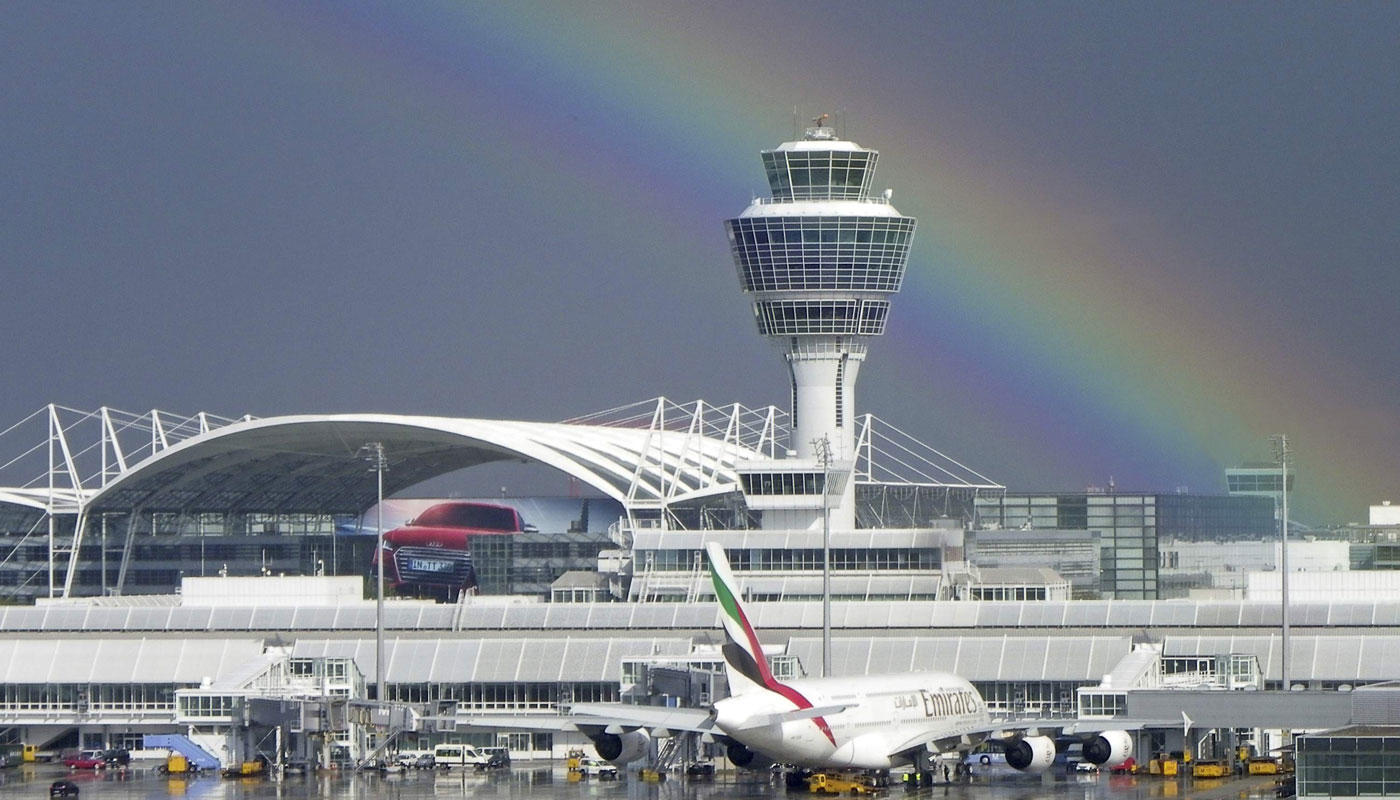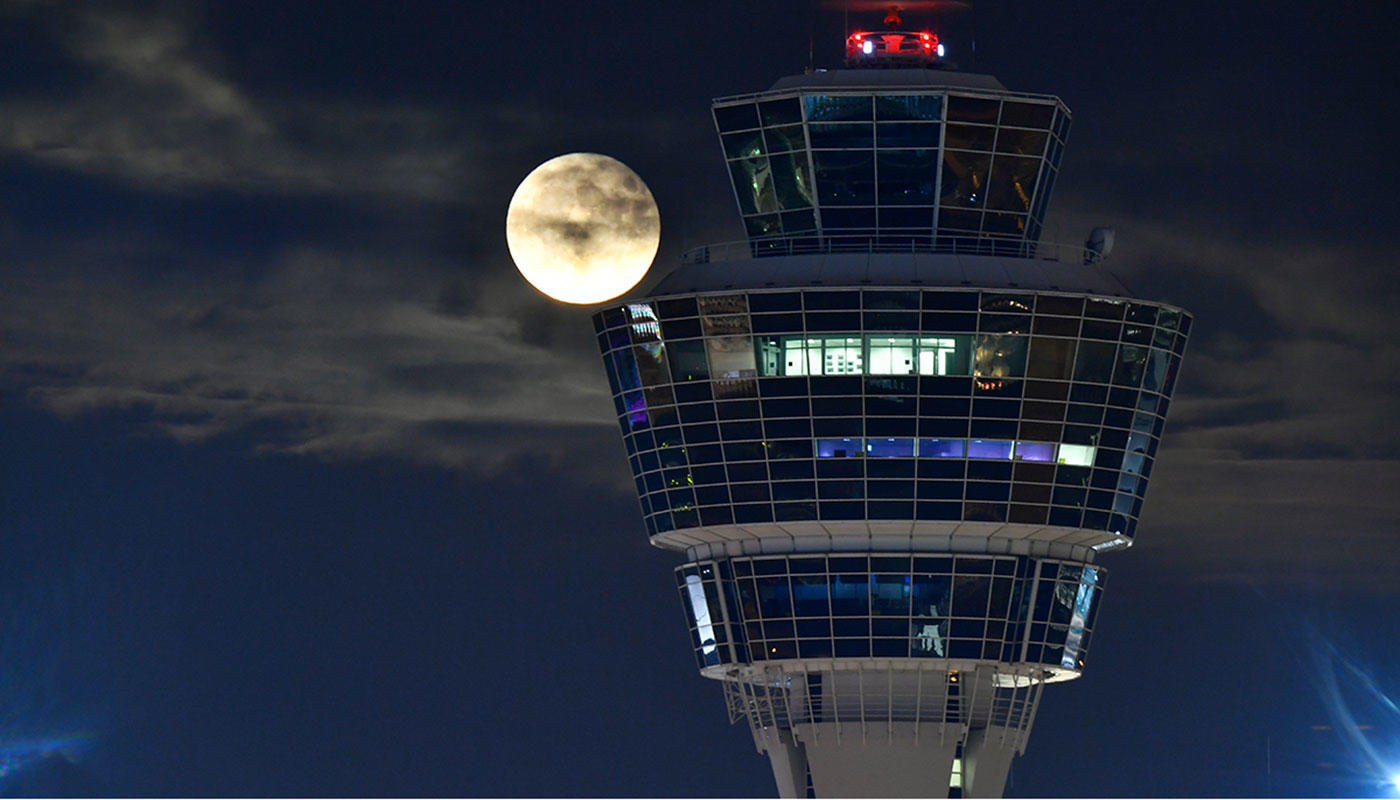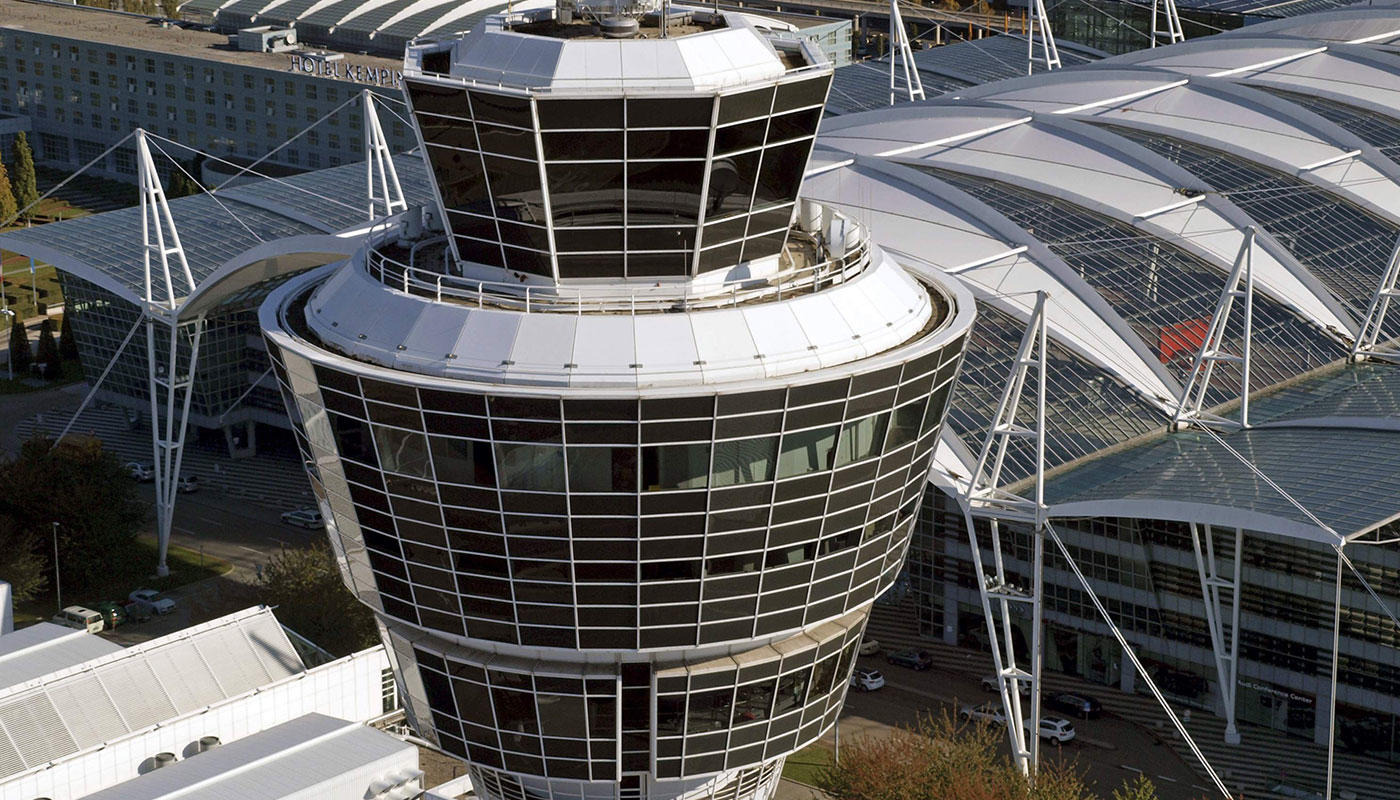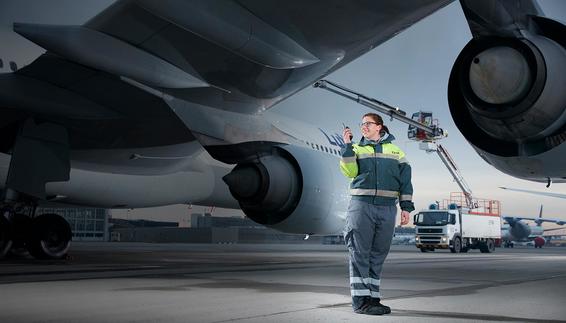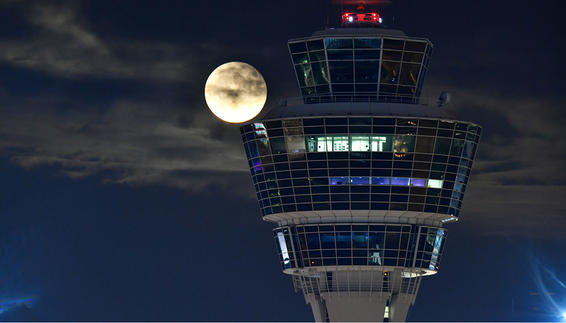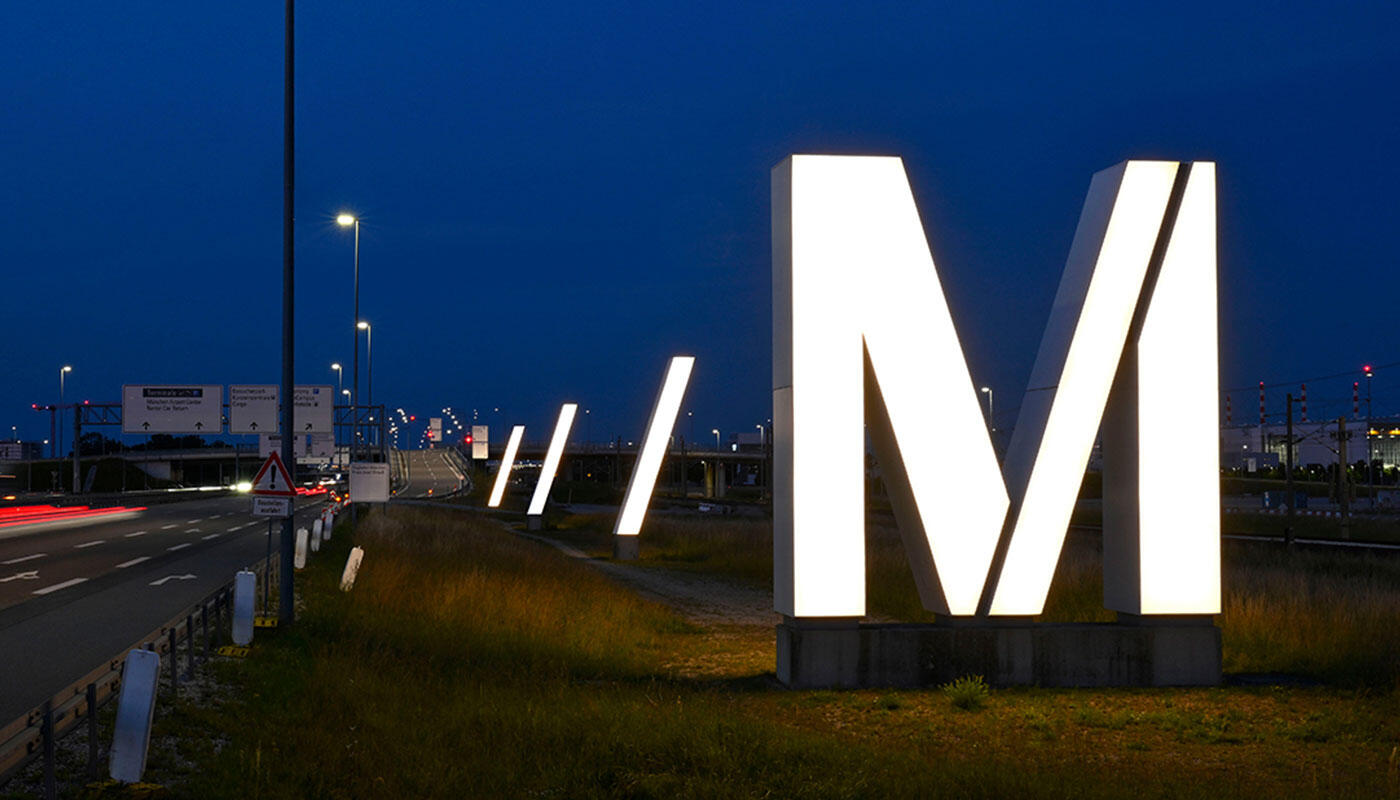One plane wants to land quickly, another is in a hurry to take off, and the third needs to slow down on final approach: It's all in a day's work for Mathias Andlinger. In the tower, looking down on the airport from a height of over 70 meters, he works with his German Air Traffic Control (DFS) colleagues to keep plenty of distance between the numbers on the radar screens. But unlike the Pacman game characters they might resemble, the numbers here represent real objects moving at different speeds: arriving, departing and taxiing aircraft.
Safety is their top priority
Another key difference: the controllers can't use a joystick to move the objects around. Instead, along with the flight timetable, weather and radar data on the screen, they mainly use their eyes, their ability to visualize and of course their voices. Most of the time several controllers are speaking at once, but it is neither loud nor hectic at the top of the tower. You only hear what they're saying when you move closer – but as an outsider, you won't understand much: "November Four" refers to one of the northern bridges between the ramp and the taxiway system, "Alpha" and "Bravo" for the taxiways to and from the runway.
The atmosphere of quiet concentration, the NATO alphabet and other specialized words and phrases are typical of working life in Munich Airport's 78-meter high tower. That also a+B9pplies to the weather observers on level 92. Now on duty is Achim Wildenauer, a specialist with the German Weather Service (DWD). The screens here display a different specialized language: the data on wind speed, cloud cover, visibility and other flight-related meteorological information gathered from 32 sensors all around the airport.
